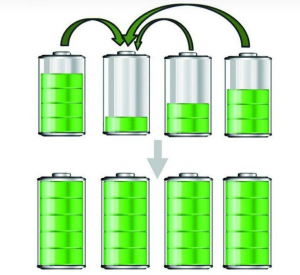
A Battery Management System (BMS) is essential for modern rechargeable battery packs. A BMS is crucial for electric vehicles (EVs) and energy storage.
It ensures the battery's safety, longevity, and optimal performance. It works with both LiFePO4 and NMC batteries. This article explains how a smart BMS deals with faulty cells.
Fault Detection and Monitoring
Detecting faulty cells is the first step in battery management. A BMS constantly monitors key parameters of each cell in the pack, including:
· Voltage: Each cell's voltage is checked to find over-voltage or under-voltage conditions. These issues can indicate that a cell is faulty or aging.
· Temperature: Sensors track the heat generated by each cell. A faulty cell may overheat, creating a risk of failure.
· Current: Abnormal current flows may signal short circuits or other electrical problems.
· Internal Resistance: Increased resistance often indicates degradation or failure.
By closely monitoring these parameters, the BMS can quickly identify cells that deviate from normal operating ranges.

Fault Diagnosis and Isolation
Once the BMS detects a faulty cell, it performs a diagnosis. This helps determine the severity of the fault and its impact on the overall pack. Some faults may be minor, needing only temporary adjustments, while others are severe and require immediate action.
You can use the active balancer in the BMS series for minor faults, such as small voltage imbalances. This technology reallocates energy from stronger cells to weaker ones. By doing this, the battery management system keeps a steady charge in all cells. This reduces stress and helps them last longer.
For more severe issues, such as short circuits, the BMS will isolate the faulty cell. This means disconnecting it from the power delivery system. This isolation lets the rest of the pack work safely. It may lead to a small drop in capacity.
Safety Protocols and Protection Mechanisms
Engineers design the smart BMS with various safety features to manage faulty cells. These include:
· Over-voltage and Under-voltage Protection: If a cell's voltage exceeds safe limits, the BMS limits charging or discharging. It may also disconnect the cell from the load to prevent damage.
· Thermal Management: If overheating occurs, the BMS can activate cooling systems, like fans, to lower the temperature. In extreme situations, it may turn off the battery system. This helps prevent thermal runaway, which is a dangerous condition. In this condition, a cell heats quickly.
Short Circuit Protection: If the BMS finds a short circuit, it quickly cuts off power to that cell. This helps prevent further damage.

Performance Optimization and Maintenance
Handling faulty cells is not just about preventing failures. The BMS also optimizes performance. It balances the load between cells and monitors their health over time.
If the system flags a cell as faulty but not yet dangerous, the BMS may reduce its workload. This extends the life of the battery while keeping the pack functional.
Also in some advanced systems, the smart BMS can communicate with external devices to provide diagnostic information. It may suggest maintenance actions, like replacing faulty cells, ensuring the system operates efficiently.
Post time: Oct-19-2024





